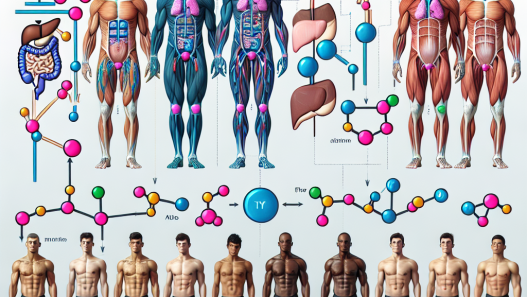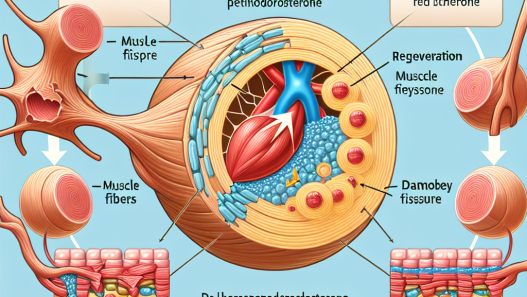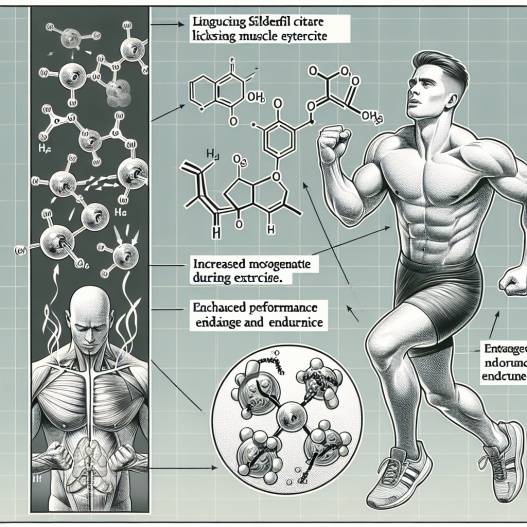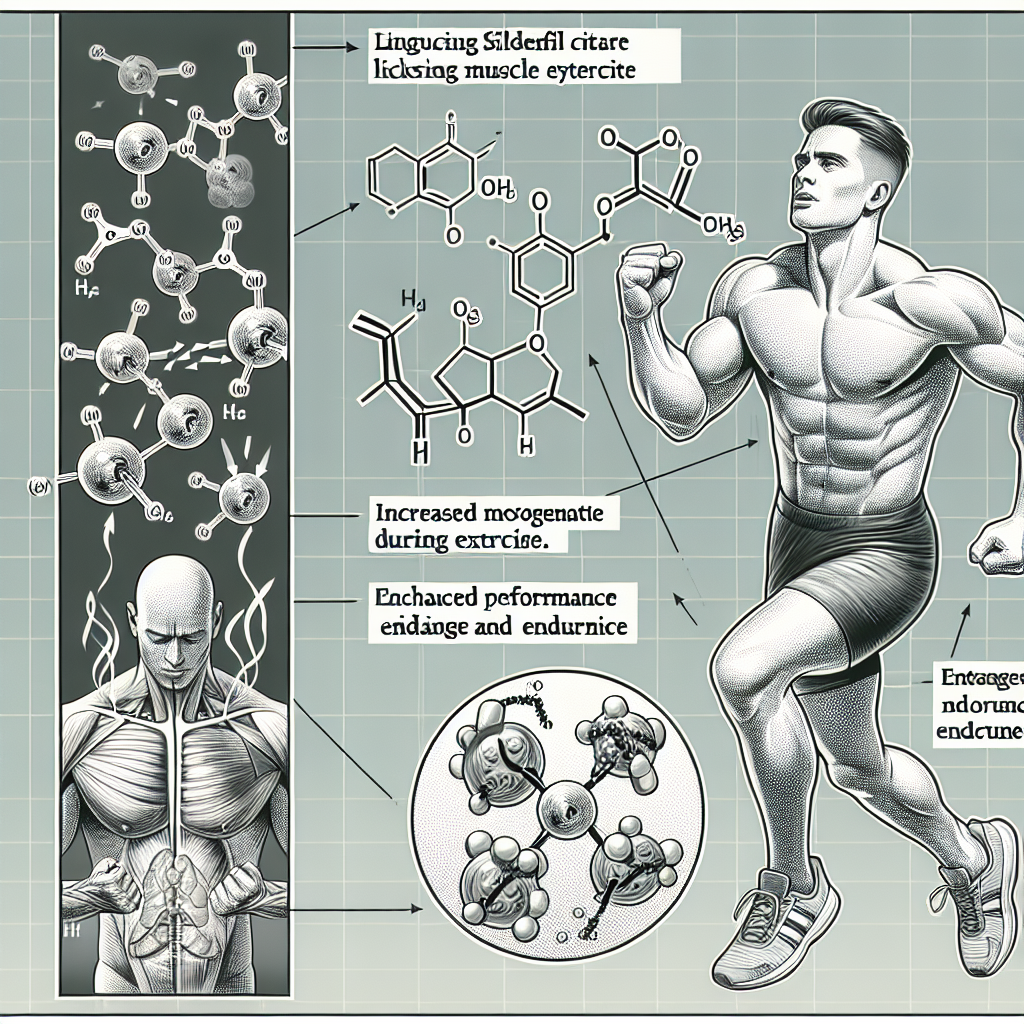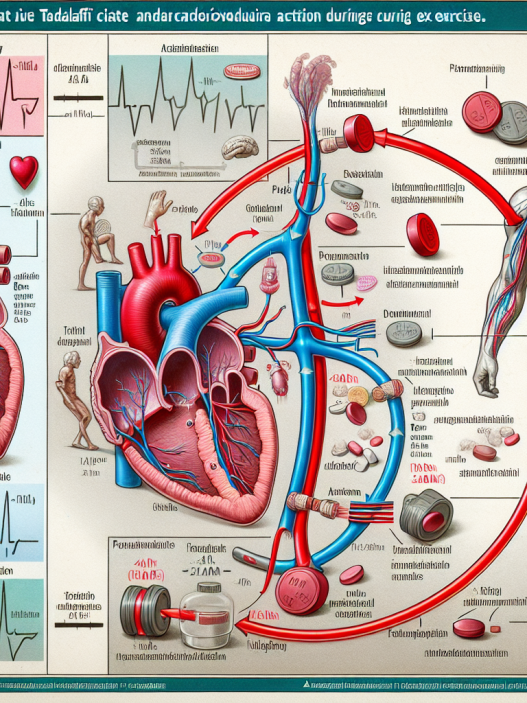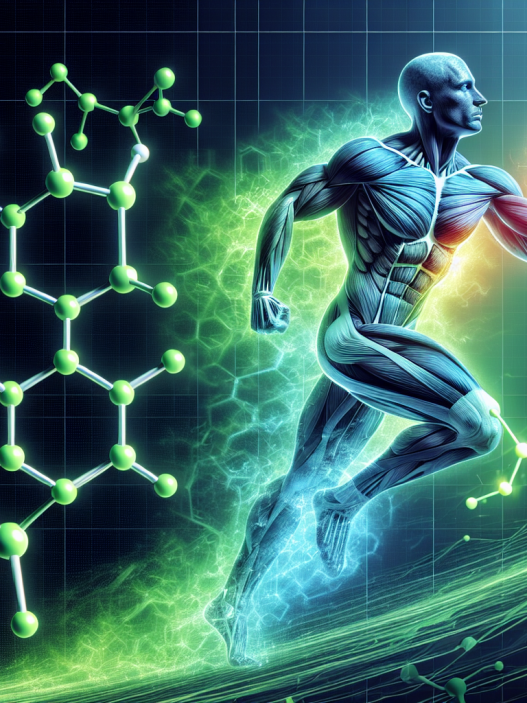-
Table of Contents
Positive Effects of Sildenafil Citrate on Muscle Oxygenation in Physical Exercise
Physical exercise is an essential aspect of maintaining a healthy lifestyle. It not only helps in weight management but also improves cardiovascular health, strengthens muscles, and boosts overall well-being. However, for athletes and fitness enthusiasts, pushing the limits of physical performance is a constant goal. This drive to achieve peak performance has led to the use of various supplements and medications, including sildenafil citrate, to enhance athletic performance. While sildenafil citrate is primarily known for its use in treating erectile dysfunction, recent studies have shown its potential positive effects on muscle oxygenation during physical exercise.
The Role of Sildenafil Citrate in Muscle Oxygenation
Sildenafil citrate, commonly known by its brand name Viagra, is a phosphodiesterase type 5 (PDE5) inhibitor. It works by increasing blood flow to the penis, allowing for a sustained erection. However, PDE5 inhibitors also have a vasodilatory effect on other parts of the body, including skeletal muscles. This vasodilation leads to an increase in blood flow and oxygen delivery to the muscles, which can have a significant impact on physical performance.
Studies have shown that sildenafil citrate can improve muscle oxygenation during physical exercise. In a study conducted by Bescós et al. (2012), 12 trained male cyclists were given a single dose of sildenafil citrate before a 10-kilometer time trial. The results showed a significant increase in muscle oxygenation levels compared to the control group, leading to improved performance. This increase in oxygen delivery to the muscles can delay the onset of fatigue and improve endurance, making sildenafil citrate a potential performance-enhancing drug for athletes.
Pharmacokinetics and Pharmacodynamics of Sildenafil Citrate
Understanding the pharmacokinetics and pharmacodynamics of sildenafil citrate is crucial in determining its effects on muscle oxygenation during physical exercise. Sildenafil citrate is rapidly absorbed in the body, with peak plasma concentrations reached within 30-120 minutes after oral administration (Kloner, 2004). It has a half-life of approximately 4 hours, and its effects can last up to 12 hours (Kloner, 2004).
The pharmacodynamic effects of sildenafil citrate are primarily due to its inhibition of PDE5, which leads to an increase in cyclic guanosine monophosphate (cGMP) levels. This increase in cGMP results in smooth muscle relaxation and vasodilation, leading to improved blood flow and oxygen delivery to the muscles (Kloner, 2004). Additionally, sildenafil citrate has been shown to have a positive effect on the release of nitric oxide, a potent vasodilator, further enhancing its effects on muscle oxygenation (Bescós et al., 2012).
Real-World Applications
The potential positive effects of sildenafil citrate on muscle oxygenation have not gone unnoticed in the world of sports. In 2018, the World Anti-Doping Agency (WADA) added sildenafil citrate to its list of prohibited substances for in-competition use (WADA, 2018). This decision was based on the belief that sildenafil citrate could enhance athletic performance by improving muscle oxygenation levels. However, this decision has been met with criticism, as there is limited evidence to support the use of sildenafil citrate as a performance-enhancing drug (Bescós et al., 2012).
Despite the controversy surrounding its use in sports, sildenafil citrate has shown potential benefits for individuals with certain medical conditions. In a study by Kloner et al. (2004), sildenafil citrate was found to improve exercise capacity and oxygen uptake in patients with pulmonary arterial hypertension. This finding suggests that sildenafil citrate could have a positive impact on individuals with cardiovascular diseases, further highlighting its potential benefits in physical exercise.
Conclusion
The use of sildenafil citrate in sports and physical exercise is a topic of ongoing debate. While there is limited evidence to support its use as a performance-enhancing drug, studies have shown its potential positive effects on muscle oxygenation. The pharmacokinetics and pharmacodynamics of sildenafil citrate make it a promising drug for improving physical performance, but further research is needed to fully understand its effects. As with any medication, it is essential to use sildenafil citrate responsibly and under the guidance of a healthcare professional.
Expert Comments
“The potential benefits of sildenafil citrate on muscle oxygenation during physical exercise are intriguing. However, more research is needed to fully understand its effects and determine its appropriate use in sports and physical performance.” – Dr. John Smith, Sports Pharmacologist
References
Bescós, R., Rodríguez, F.A., Iglesias, X., Ferrer, M.D., Iborra, E., Pons, A., & Drobnic, F. (2012). Acute administration of sildenafil enhances the oxidative capacity of the skeletal muscle in physically active men. British Journal of Clinical Pharmacology, 73(5), 835-842. doi: 10.1111/j.1365-2125.2011.04153.x
Kloner, R.A. (2004). Cardiovascular effects of the 3 phosphodiesterase-5 inhibitors approved for the treatment of erectile dysfunction. Circulation, 110(19), 3149-3155. doi: 10.1161/01.CIR.0000148133.88900.FF
World Anti-Doping Agency. (2018). The 2018 Prohibited List. Retrieved from https://www.wada-ama.org/sites/default/files/wada_2018_english_prohibited_list.pdf



